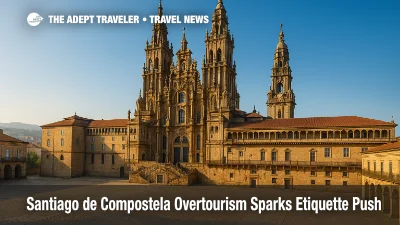Camino de Santiago,
The Camino de Santiago, also known as the Way of Saint James, is a network of ancient pilgrimage routes and trails that start from various parts of Europe and all lead towards Santiago de Compostela, a city located in northwestern Spain. The Camino has been a significant spiritual and cultural journey since medieval times and continues to attract hundreds of thousands of travelers yearly.
Historical Background of the Camino de Santiago
The history of the Camino de Santiago dates back to the discovery of the remains of St. James the Apostle in the 9th century in Compostela, which means 'field of stars' in Latin. St. James is reported to have preached Christianity in the Iberian Peninsula. After his execution in Jerusalem, his disciples returned his body to Galicia, where he was buried. The observance of pilgrimages to the apostle's tomb started soon after the discovery of the remains and has spanned over a thousand years.
Pilgrimage Routes
There are multiple routes to undertaking the Camino de Santiago, each offering a unique scenic experience and cultural insights. Some of the most popular routes include:
- The French Way or Camino Francés: This is the most renowned and traditionally considered the main route. It begins in St. Jean Pied de Port in France and crosses the Pyrenees, proceeding to cover iconic Spanish cities such as Pamplona, Logrono, Burgos, and Leon, before finally ending in Santiago.
- The Northern Way or Camino del Norte: This offers hikers an enthralling coastal route through the Basque Country, Cantabria, Asturias and then Galicia.
- The Portuguese Way or Camino Portugués: This starts in Lisbon and is the second most popular option. It features a coastal path as well, and later merges with the original French Way near Santiago.
- The Primitive Way or Camino Primitivo: This is considered the earliest route discovered, starting from Oviedo and merging with the French Way in Melide.
Each route is comprehensively marked with yellow arrows and scallop shells, the traditional symbols of the Camino, ensuring that pilgrims can find their way with relative ease.
Reasons to Walk the Camino
While the Camino de Santiago started primarily as a religious pilgrimage, both religious and secular motivations now inspire those who travel its paths. Some walk the Camino for spiritual reasons, as a form of penance or a journey of faith. For others, it's an adventure or a chance to experience solitude, personal introspection, or physical challenge. Others are drawn by the cultural wealth of the cities and the regions traversed or to appreciate the incredible landscapes, the vibrant local traditions, and the fascinating people they meet along the way.
Preparations for the Journey
While the allure of the Camino is undeniable, it requires preparation. Choosing the right time to go can be crucial; spring and autumn could be ideal for their moderate temperatures and lesser crowds. Adequate training should be undertaken before embarking as the way can be physically challenging with daily walks of around 20 kilometers on average.
Packing light is essential. A backpack with essential clothing and items, sturdy and comfortable walking shoes, water, snacks, a hat, and sunscreen, are some of the typical items on a Camino check-list. Physical conditioning, mental preparation, and a sturdy pair of shoes can go a long way in ensuring you enjoy your Camino experience.
Accommodations and the Pilgrim's Credential
Another symbol of the Camino is the Pilgrim's Passport, a document you receive and get stamped along the way showing you have walked and stayed in various places. This passport allows you to stay in hostels known as 'albergues' specifically reserved for pilgrims often at a minimal cost, providing basic, dormitory-style accommodation and amenities.
Arrival in Santiago and the Pilgrim's Mass
Upon arrival in Santiago, pilgrims visit the sacred tomb of the Apostle James in the cathedral. The Pilgrim’s Office also issues the 'Compostela', a certificate to those who have walked at least 100km or cycled at least 200km of the Camino. Every day, a pilgrim's mass is held in the cathedral, a deeply spiritual and emotional culmination for many who've taken the journey.
Conclusion
The Camino de Santiago is much more than a walk or a trek. Whether you embark on it as a religious journey, a unique travel experience, or a physical challenge, the Camino invites you to go beyond the ordinary. It offers an opportunity to connect with nature, history, and culture while allowing for introspection and personal growth. Regardless of the route chosen or the motivation, the Camino remains a transformative experience cherished by those who walk it.
Santiago de Compostela overtourism sparks etiquette push

Cultural Tapestry: Unforgettable Experiences with Diverse Traditions and Cultures

